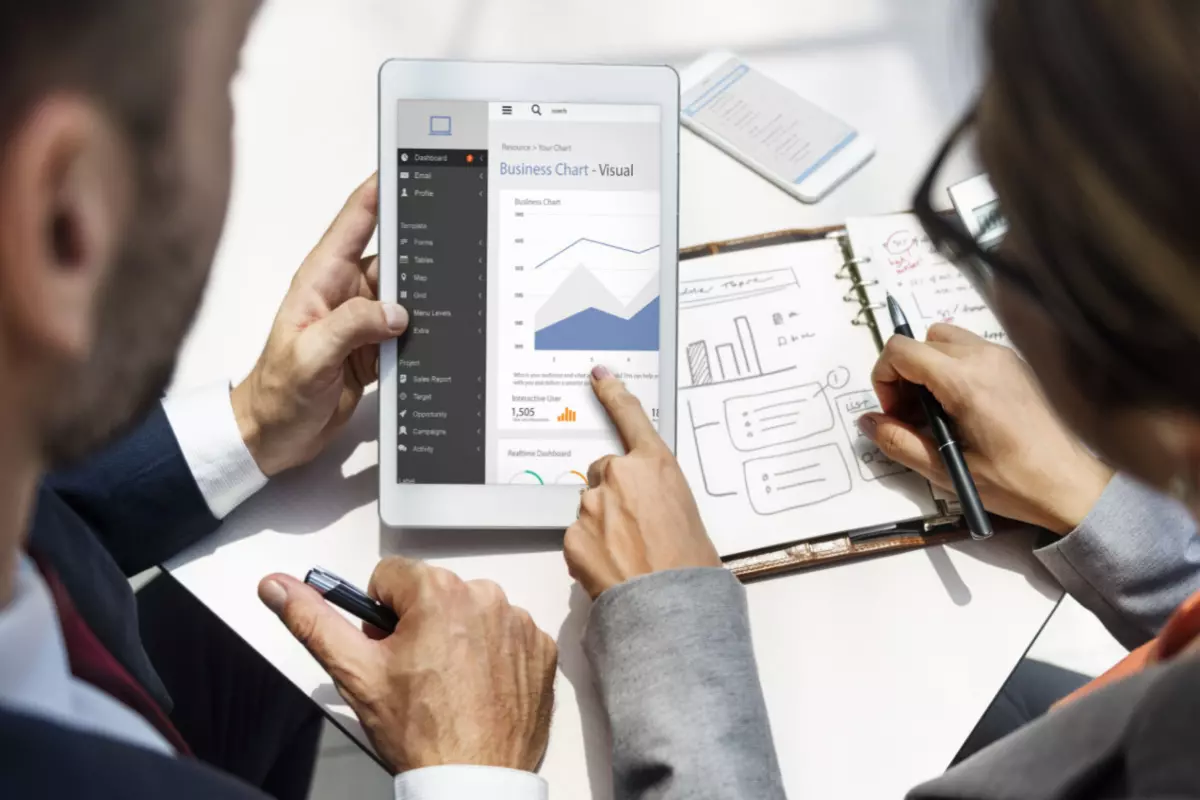Data Insights: What They Are and Modern Ways to Gather Them
In an era where data floods every aspect of business, finding insights in this data is more than a skill – it’s a necessity for growth and competitive edge. These insights are not just numbers; they represent the deep, actionable knowledge that can propel a business forward.
This article will break down the concept of data insights and analytics, explaining their value and how businesses today can effectively collect and harness them for smarter decision-making.
What Are Data Insights?
Data insights represent the knowledge and understanding gained through the detailed analysis of raw data. Unlike simple data collection or surface-level analytics, insights dig deeper, uncovering trends, patterns, and anomalies that are not immediately obvious.

They transform raw data into a strategic asset, enabling businesses to make informed decisions with confidence. By leveraging data insights, organizations can identify opportunities for growth and enhance customer experiences. Essentially, insights bridge the gap between data collection and strategic action, turning information into a tool for competitive advantage.
What Are the Differences Between Data, Analytics & Insights?
These terms, while often used interchangeably, denote distinct stages in the data processing hierarchy, each contributing in its own way to the goal of informed decision-making in business, science, and technology. Grasping the nuances between analytics and insights is necessary for those aiming to maximize the benefits of data-driven strategies.
What Is Data?
Data is the raw, unprocessed facts and figures collected from social media, email and communications systems, public records, and Customer Relationship Management (CRM) systems. In the context of data insights, it serves as the foundational layer for further analysis and interpretation. Data can be quantitative or qualitative, structured or unstructured, encompassing numbers, text, images, and sounds.
Its defining characteristic is that by itself, data lacks context or meaning; it merely represents a record of observations or transactions awaiting analysis.
What Is Analytics?
Analytics involves the systematic computational analysis of data or statistics. It represents the process through which raw data is converted into meaningful information, allowing for the examination of patterns, trends, and relationships within the data.
Through various techniques and tools, analytics transforms the initial data set into a form that is more understandable and useful for making decisions. This stage is key for extracting value from data, enabling organizations to make more informed choices based on the insights derived.
What Are Insights?
Insights are the valuable outcomes obtained from analyzing data. They provide clarity and actionable information that can influence decision-making and strategic initiatives. Unlike raw data or intermediate analytical results, insights are characterized by their ability to reveal underlying patterns or causes behind observed phenomena.
They often answer “why” something is happening and suggest potential actions to take. Generating insights from data requires not just analytical skills but also the ability to connect data patterns with business or operational contexts.
What Are the Differences?
The key differences between data, analytics, and insights lie in their function and place within the data processing hierarchy. Data serves as the base material – unrefined and without interpretation. Analytics is the process of refining this material, employing statistical methods and computational analysis to unearth patterns and relationships.
Insights, on the other hand, are the polished end product, offering clear, actionable information based on the analyzed data. While data is ubiquitous and raw, insights are selective and refined, focusing on the implications of data patterns and how they can be applied to influence outcomes and decisions. This progression from data to insights encapsulates the transformation of mere information into a strategic asset.
Data Insights Examples
In today’s landscape, the ability to sift through and interpret data is a cornerstone of strategic decision-making across various industries. The insights this analysis offers enable organizations to uncover hidden opportunities and address challenges with precision. Let’s explore examples from various sectors that illustrate the transformative power of data-driven insights in enhancing innovation and efficiency.

- Retail Sector: A retail company analyzes customer purchase data and identifies a pattern where sales of certain products peak during specific times of the year. The insight here is not just the pattern of increased sales but understanding why these peaks occur – perhaps due to seasonal demand, holidays, or promotional events. This understanding allows the retailer to optimize stock levels, tailor marketing campaigns, and adjust pricing strategies ahead of these peak times to maximize sales and customer satisfaction.
- Healthcare Industry: A healthcare provider analyzes patient data and finds that patients with certain chronic conditions are often readmitted within 30 days of discharge. This suggests that these readmissions may be linked to inadequate post-discharge care for these conditions. This can lead to the development of targeted follow-up care programs, reducing readmissions and improving patient outcomes.
- Finance Sector: A financial institution analyzes transaction data and detects a trend of increasing transaction volumes on mobile platforms. The key insight is not just the shift in customer behavior towards mobile banking but also the potential demand for more sophisticated mobile banking services. This could prompt the bank to invest in enhancing its mobile banking app, introducing new features, and improving security measures to meet customer expectations and stay ahead of competitors.
- E-Commerce: An e-commerce platform uses data analytics to track user behavior on its website. It finds that users who watch product videos are more likely to make a purchase. The insight here reveals the effectiveness of video content in influencing buying decisions. Consequently, the platform might decide to increase investment in video content production and encourage sellers to add videos to their product listings.
How to Get Data Insights
The process of turning data into insights involves a variety of methods, from time-honored techniques to the latest in digital technology. Each method unlocks valuable information in its own way, shaping decisions and strategies. Let’s delve into how these varied approaches, from surveys to big data analytics, contribute to extracting actionable insights.
Traditional Methods of Collecting Insights
Traditional methods of gathering insights often involve manual processes, including surveys, focus groups, and the analysis of historical data. These approaches have been the backbone of market research and business intelligence for decades:
- Surveys and Questionnaires: By directly asking questions to a target audience, organizations can gather quantitative data on consumer preferences, behaviors, and opinions. For example, a company launching a new product might use surveys to gauge potential customer interest and willingness to purchase.
- Focus Groups: This qualitative technique involves small groups of people discussing a product, service, or concept, providing depth and context to the insights gained. For example, a software company might use focus groups to gather feedback on a new project management tool, obtaining detailed opinions on its usability, features, and integration capabilities with existing systems, guiding product refinement and marketing strategies.
- Historical Data Analysis: Examining sales records, performance metrics, and past marketing campaign results enables organizations to identify trends and patterns. A retail chain, for example, might analyze historical sales data to determine the most popular products during different seasons, guiding inventory decisions.
Modern Methods of Gathering Data Insights
With the advent of digital technology, modern methods for generating insights from data have become increasingly sophisticated, leveraging advanced analytics and big data technologies. These methods offer the ability to process vast amounts of data at high speed, providing deeper insights and predictive capabilities:
- Big Data Analytics: Utilizing complex algorithms and computational techniques, big data analytics can process and analyze large datasets from various sources. A telecommunications company, for instance, might use big data analytics to analyze call data records in real-time, identifying patterns that indicate fraudulent activity.
- Machine Learning and AI: These technologies automate the process of generating insights and making predictions by identifying patterns in data. An e-commerce platform could employ machine learning algorithms to recommend products to users based on their browsing and purchase history, enhancing the shopping experience and increasing sales.
- Social Media Analytics: By analyzing data from social media platforms, organizations can get real-time insights into consumer sentiment and trending topics. For example, a fashion brand might use social media analytics to monitor reactions to a new product launch, adjusting marketing strategies based on public sentiment.
5 Best Ways to Convert Data into Actionable Insights
Actionable insights enable decision-makers to uncover opportunities, refine processes, and tackle challenges efficiently. However, making the leap from data to insights involves a blend of analytical techniques and business insight. Below, we explore five distinct methods to turn data into actionable insights:
1. Implementing Advanced Analytics and Machine Learning
Advanced analytics and machine learning analyze large datasets to find hidden patterns and predict future outcomes, using historical data to improve their predictions over time. This process, known as data exposure, enhances the algorithms’ accuracy without manual intervention. Predictive insights, the results of these analyses, enable businesses to foresee trends and behaviors, guiding better decision-making.
- Example: A retail company employs a machine learning platform’s models to sift through customer purchase histories and online behaviors. By identifying trends within this data, the company can forecast future purchasing patterns, tailor marketing messages, and suggest products, thus boosting sales and customer contentment.
2. Utilizing Data Visualization Tools
Data visualization tools transform raw data into graphical formats, simplifying the detection of trends, outliers, and patterns. These tools play a key role in conveying complex data intuitively, making it straightforward for stakeholders to digest insights quickly.
- Example: A healthcare provider utilizes data visualization to correlate patient outcomes with treatment approaches. By visualizing this data, effective treatments become apparent, enhancing patient care and optimizing the allocation of resources.
3. Conducting A/B Testing
A/B testing is a structured process of comparing two versions of a webpage, product feature, or campaign to determine which one yields better performance. Rooted in statistical analysis, this approach informs decision-making through direct data comparison.
- Example: An e-commerce website tests two homepage designs (A and B) to identify which leads to superior user engagement. Analyzing metrics such as dwell time, click-through rates, and conversion rates allows the service to select the design that enhances user experience and interaction.
4. Leveraging Real-time Data Monitoring
Real-time data monitoring involves the instantaneous analysis of data as it becomes available, facilitating immediate insights and actions. This method is invaluable in scenarios where conditions evolve swiftly, and prompt decision-making is essential.
- Example: A logistics company monitors its vehicle fleet using real-time GPS and sensor data. Analyzing this information allows for route optimization, fuel consumption reduction, and maintenance anticipation, leading to enhanced efficiency and cost savings.
5. Applying Customer Feedback Analysis
Analyzing customer feedback, including reviews, surveys, and social media commentary, yields qualitative insights into satisfaction and preferences. Using tools that understand and measure the tone and emotions in the feedback, businesses can gauge customer satisfaction and preferences more accurately.

- Example: A software development firm systematically gathers and scrutinizes user feedback on its product. By analyzing the tone and emotions expressed in the feedback, the firm identifies frequent problems and highly requested features, guiding updates that enhance the product and increase customer satisfaction.
Sum Up
In today’s data-rich environment, businesses turn raw data into strategic insights for informed decision-making. Distinguishing between data, analytics, and insights is key to effectively using information.
With methods ranging from traditional surveys to modern big data technologies, actionable insights help organizations refine operations, enhance customer experiences, and stay competitive.
Try our real-time predictive modeling engine and create your first custom model in five minutes – no coding necessary!
- Fully operational AI with automated model building and deployment
- Data preprocessing and analysis tools
- Custom modeling solutions
- Actionable analytics
- A personalized approach to real-time decision making
Table of Contents
- What Are Data Insights?
- What Are the Differences Between Data, Analytics & Insights?
- What Is Data?
- What Is Analytics?
- What Are Insights?
- What Are the Differences?
- Data Insights Examples
- How to Get Data Insights
- Traditional Methods of Collecting Insights
- Modern Methods of Gathering Data Insights
- 5 Best Ways to Convert Data into Actionable Insights
- 1. Implementing Advanced Analytics and Machine Learning
- 2. Utilizing Data Visualization Tools
- 3. Conducting A/B Testing
- 4. Leveraging Real-time Data Monitoring
- 5. Applying Customer Feedback Analysis
- Sum Up



